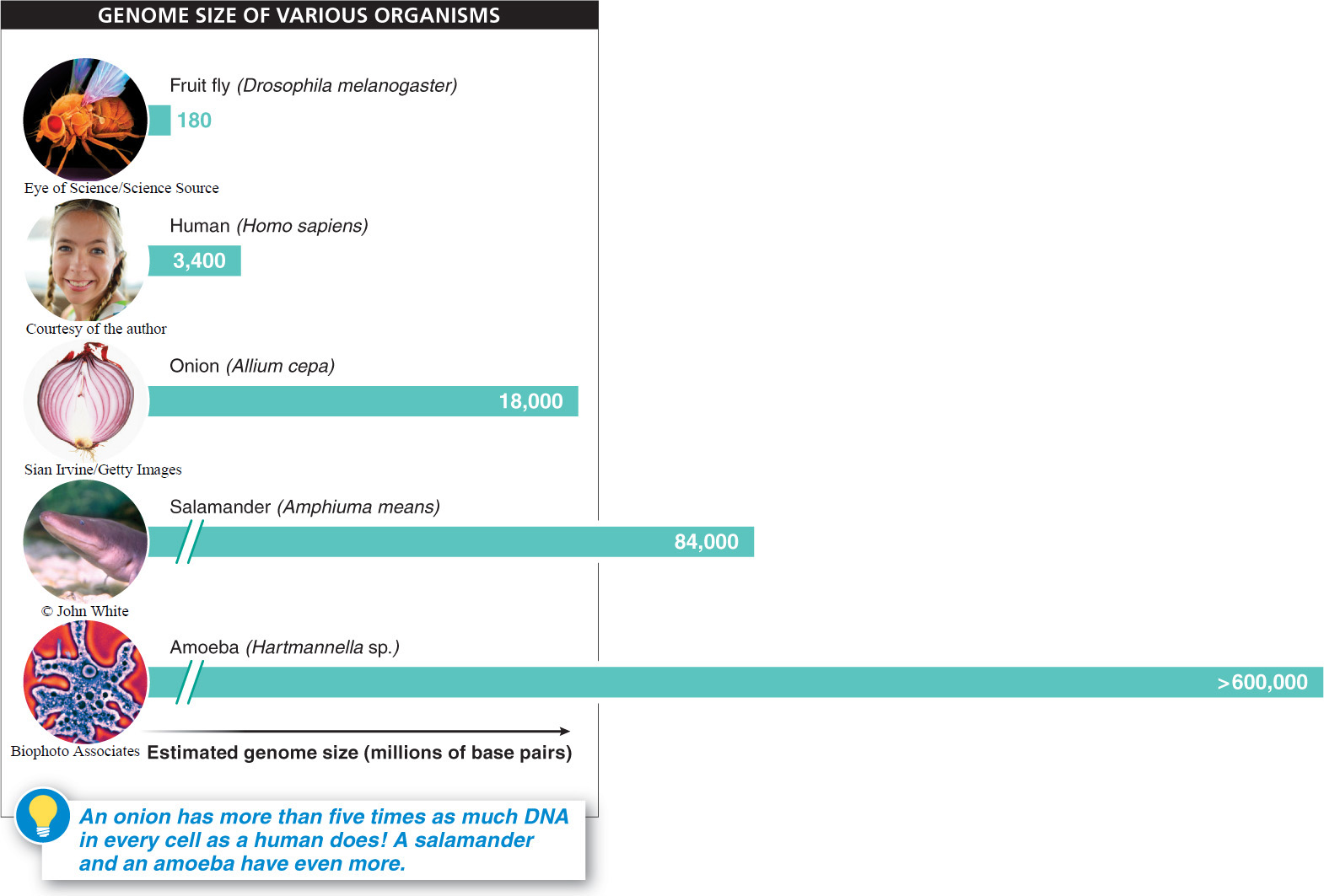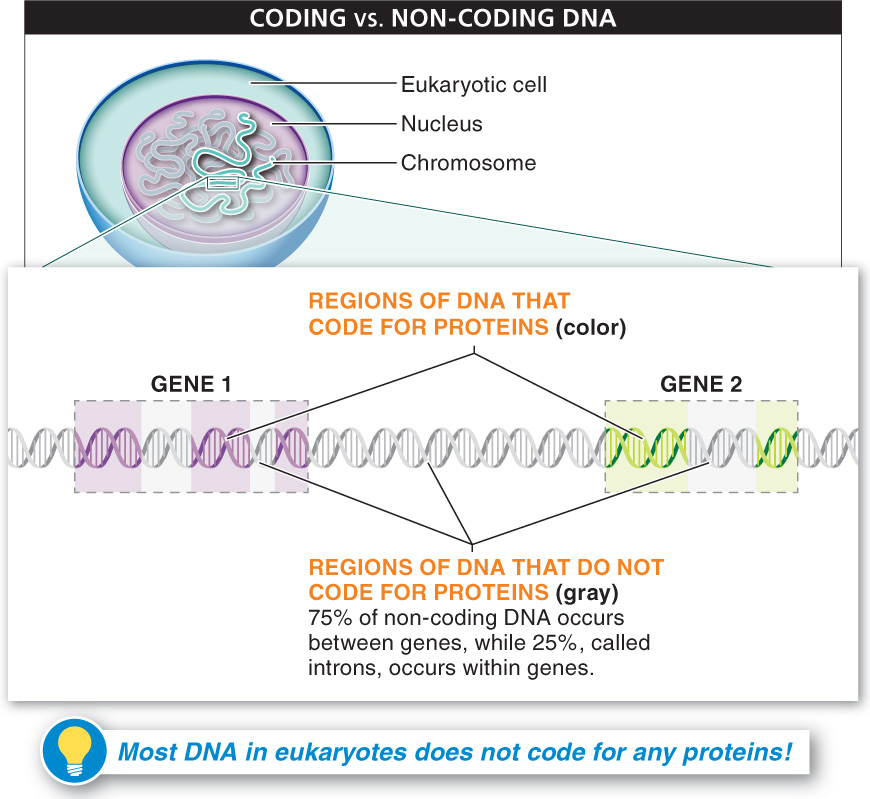5.4: Not all DNA contains instructions for making proteins.
It is debatable whether humans are the most complex species on the planet, but surely we must be more complex than an onion. “Complexity” is somewhat subjective and can be assessed in a variety of ways, such as by counting the number of different cell types in the organism. But if we measured complexity simply as the amount of DNA an organism has, we’d have to say an onion is more complex—it has more than five times as much DNA as a human (FIGURE 5-8)! We don’t fare any better when compared with some other seemingly simple organisms, either. The salamander species Amphiuma means, for example, has about 25 times as much DNA as we do, and one species of amoeba—a single-celled organism—has almost 200 times as much!
Q
Question
5.3
An onion has five times as much DNA as a human. Why doesn’t that make onions more complex than humans?

Figure 5.8: Is the size of an organism’s genome related to its complexity?
Comparing the amount of DNA present in various species, in terms of both numbers of chromosomes and numbers of base pairs, reveals a paradox: there does not seem to be any relationship between the size of an organism’s genome and the organism’s complexity.
The description earlier in this chapter about what DNA is and how genes code for proteins is logical and tidy, but it doesn’t completely explain what we observe in cells. In humans, for example, genes make up only about 2% of the DNA (FIGURE 5-9). In many species, the proportion of the DNA that consists of genes is even smaller. In almost all eukaryotic species, the amount of DNA present far exceeds the amount necessary to code for all of the proteins in the organism. The fact is, a huge proportion of the base sequences in DNA do not code for proteins and have no known purpose. When it was first observed, some biologists even referred to this non-coding DNA as “junk DNA.”

Figure 5.9: “Junk DNA.” The proportion of DNA that codes for proteins or RNA varies greatly among species. Of the species listed, which has the least “junk DNA”?
In what types of organisms do we find the most “junk DNA”? Bacteria and viruses tend to have very little non-coding DNA; genes make up 90% or more of their DNA. It is in the eukaryotes (with the exception of yeasts) that we see an explosion in the amount of non-coding DNA (FIGURE 5-10). Non-coding regions of DNA often take the form of sequences that are repeated, sometimes thousands (or even hundreds of thousands) of times; often these repeats exist because some DNA sequences can make copies of themselves and move throughout the genome. Occasionally, the non-coding DNA consists of gene fragments, duplicate versions of genes, and pseudogenes (sequences that evolved from actual genes but accumulated mutations that made them lose their protein-coding ability). About 25% of the non-coding regions occur within genes—in which case they are called introns. About 75% of the non-coding regions occur between genes (see Figure 5-10).

Figure 5.10: Non-coding regions of DNA. These regions are found both between and within genes.
In the end, the presence of this non-coding DNA is still not completely understood. Recent evidence has revealed, however, that some of the “non-coding” DNA actually does encode extremely short RNA molecules (~20 nucleotides long) that function in gene regulation; they act as a “switch” that regulates when genes are turned on or off, or as a “volume knob” that influences the rate at which gene products are produced. Non-coding DNA may also serve as a reservoir of potentially useful sequences. In any case, the label “junk DNA” is a bad description.
TAKE-HOME MESSAGE 5.4
Only a small fraction of the DNA in eukaryotic species is in genes that code for proteins; the function of much of the rest is still poorly understood, although at least some of it plays important roles in the cell, such as gene regulation.
Genes make up approximately what fraction of human DNA? What fraction of bacterial DNA?


